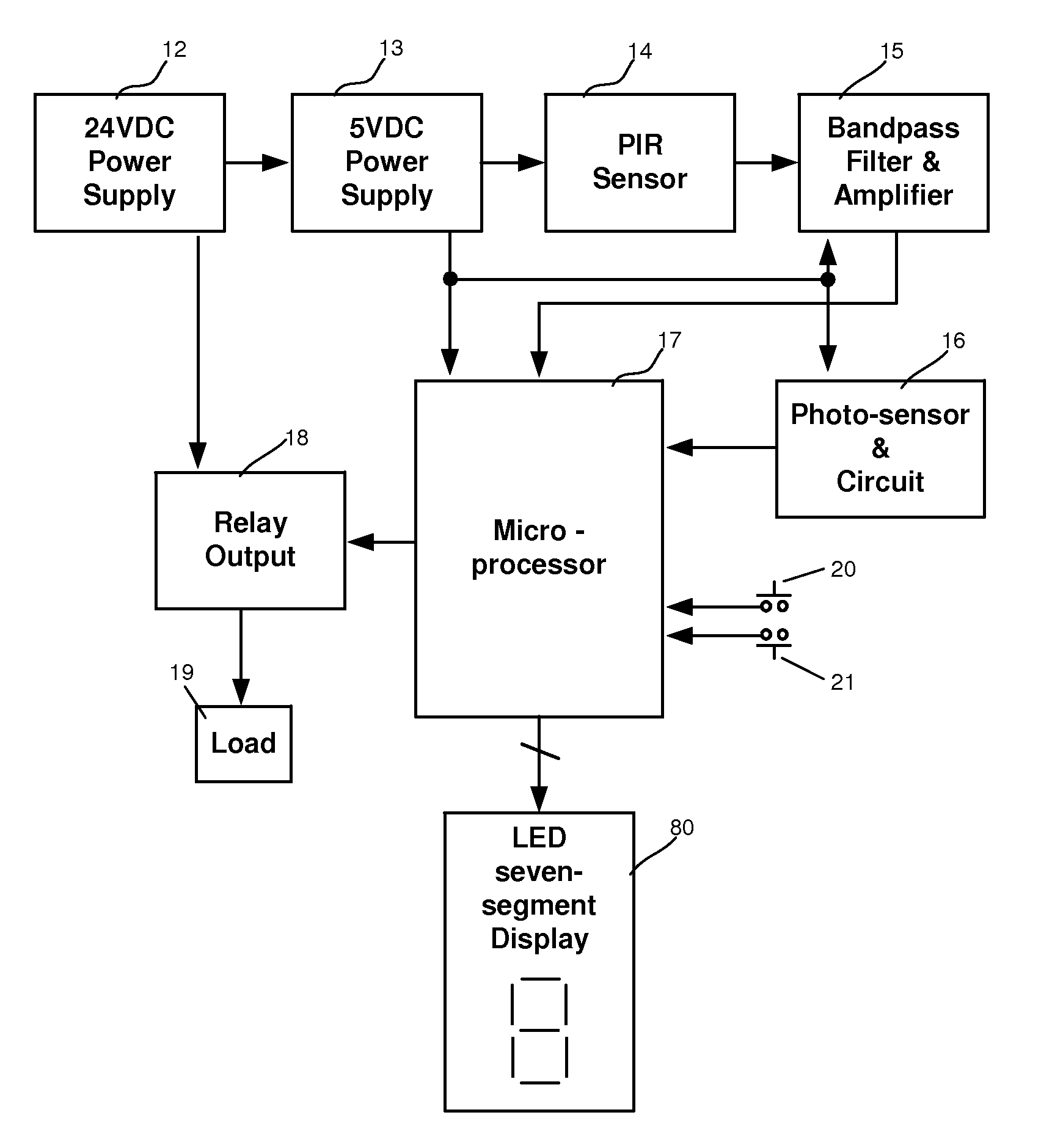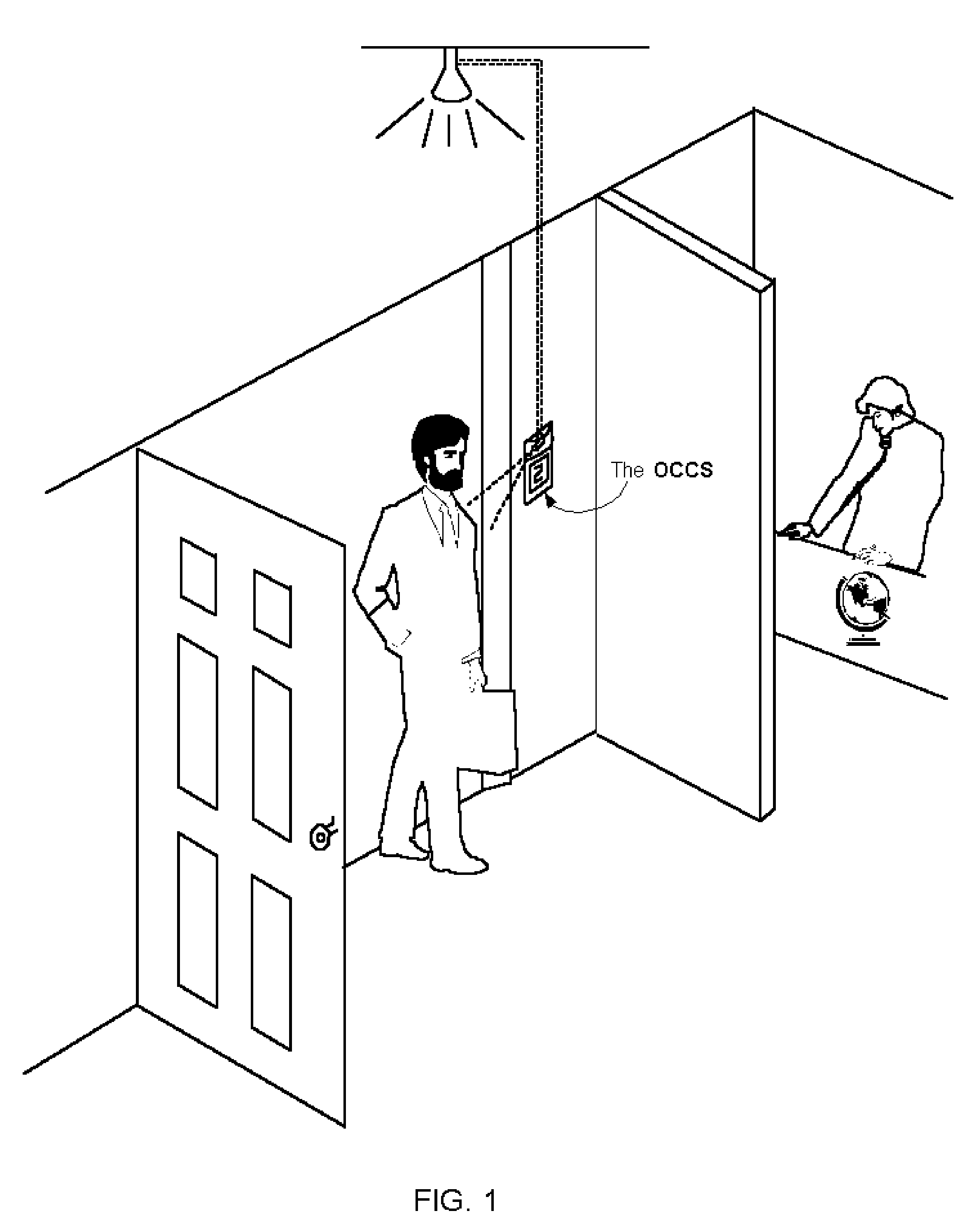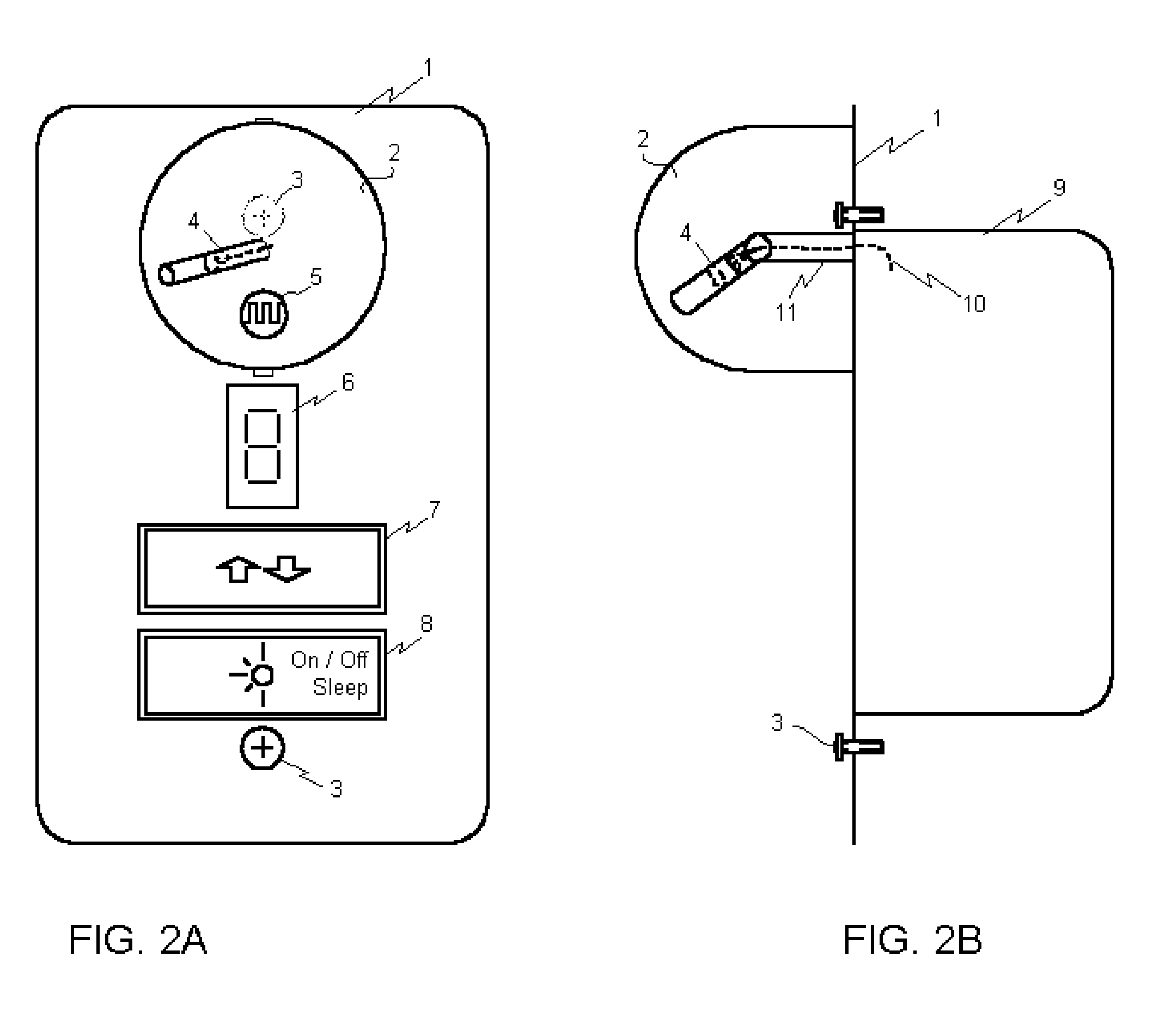Occupant Counter Control Switch for automatic turning on and off electrical appliances in a room
a technology of automatic turning on and off and occupant counter, which is applied in the direction of computer control, program control, instruments, etc., can solve the problems of wasting energy, wasting energy, and prior art not being very useful for application, and achieves simple construction, easy change of count value, and energy saving
- Summary
- Abstract
- Description
- Claims
- Application Information
AI Technical Summary
Benefits of technology
Problems solved by technology
Method used
Image
Examples
Embodiment Construction
[0020]As shown in the FIG. 3, the present invention Occupant Counter Control Switch, OCCS for short, is provided with a PIR motion sensor 14 to detect heat, infrared energy, from human body moving across the sensor. The PIR sensor is powered by a regulated 5VDC 13, which is supplied by an unregulated 24VDC 12. The signal of the PIR sensor is, unique to each of the two directions of a person entering or exiting the room (see FIG. 4), amplified and filtered by U2 with the RC combinational network R10, R11, C5, C6, and C7 shown in the FIG. 6. U2 is bias at 2.5VDC and is in current amplification mode. The amplified PIR signal is then fed to the A / D, analog to digital converter, of the microprocessor U4 in FIG. 6 for further process for counting and thereby controlling the relay to drive electrical appliances. The embedded program, based on the algorithm shown in FIG. 7 that will be clarified later, directs the microprocessor from receiving and analyzing inputs to appropriately timing an...
PUM
 Login to View More
Login to View More Abstract
Description
Claims
Application Information
 Login to View More
Login to View More - R&D
- Intellectual Property
- Life Sciences
- Materials
- Tech Scout
- Unparalleled Data Quality
- Higher Quality Content
- 60% Fewer Hallucinations
Browse by: Latest US Patents, China's latest patents, Technical Efficacy Thesaurus, Application Domain, Technology Topic, Popular Technical Reports.
© 2025 PatSnap. All rights reserved.Legal|Privacy policy|Modern Slavery Act Transparency Statement|Sitemap|About US| Contact US: help@patsnap.com



